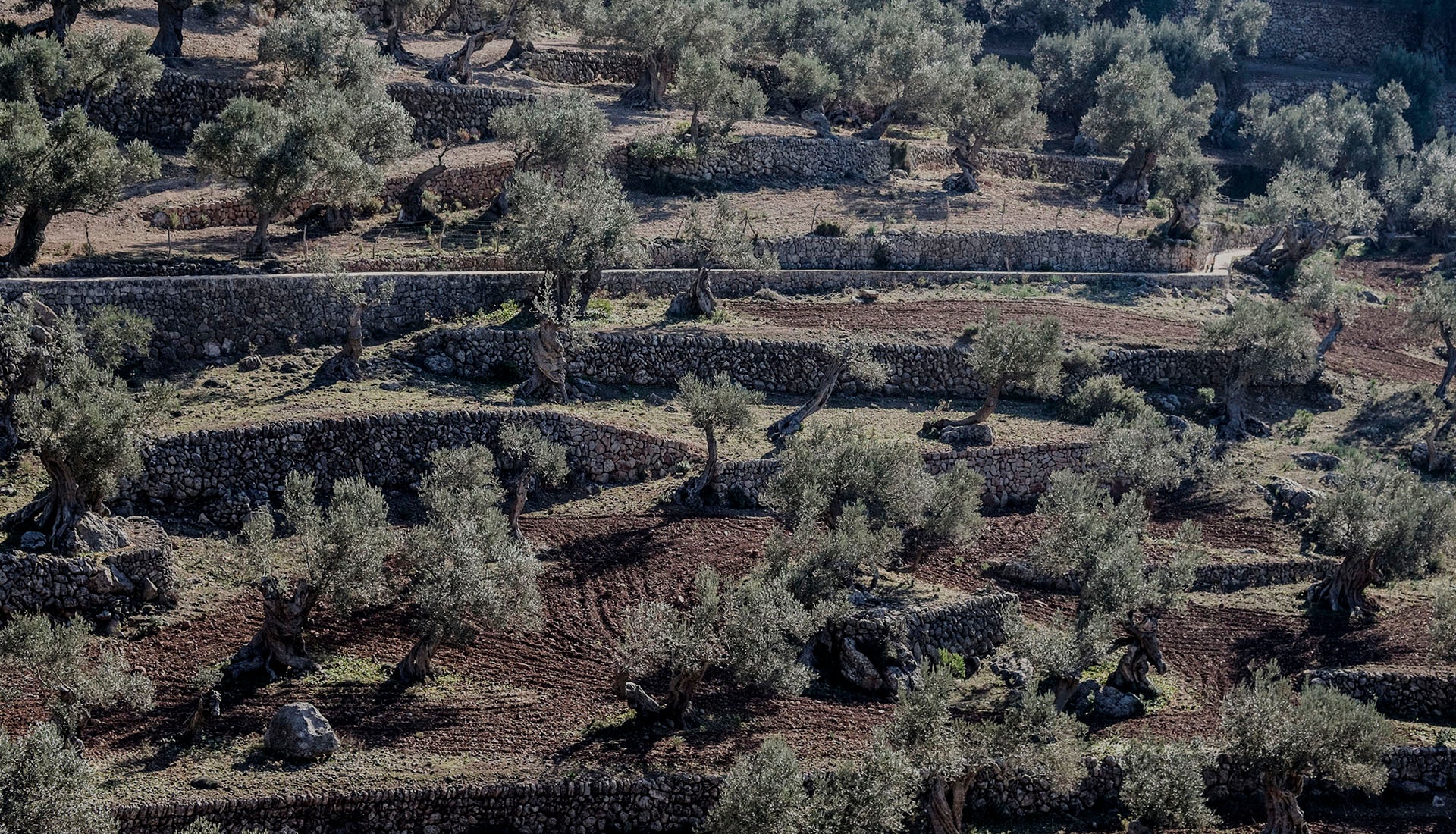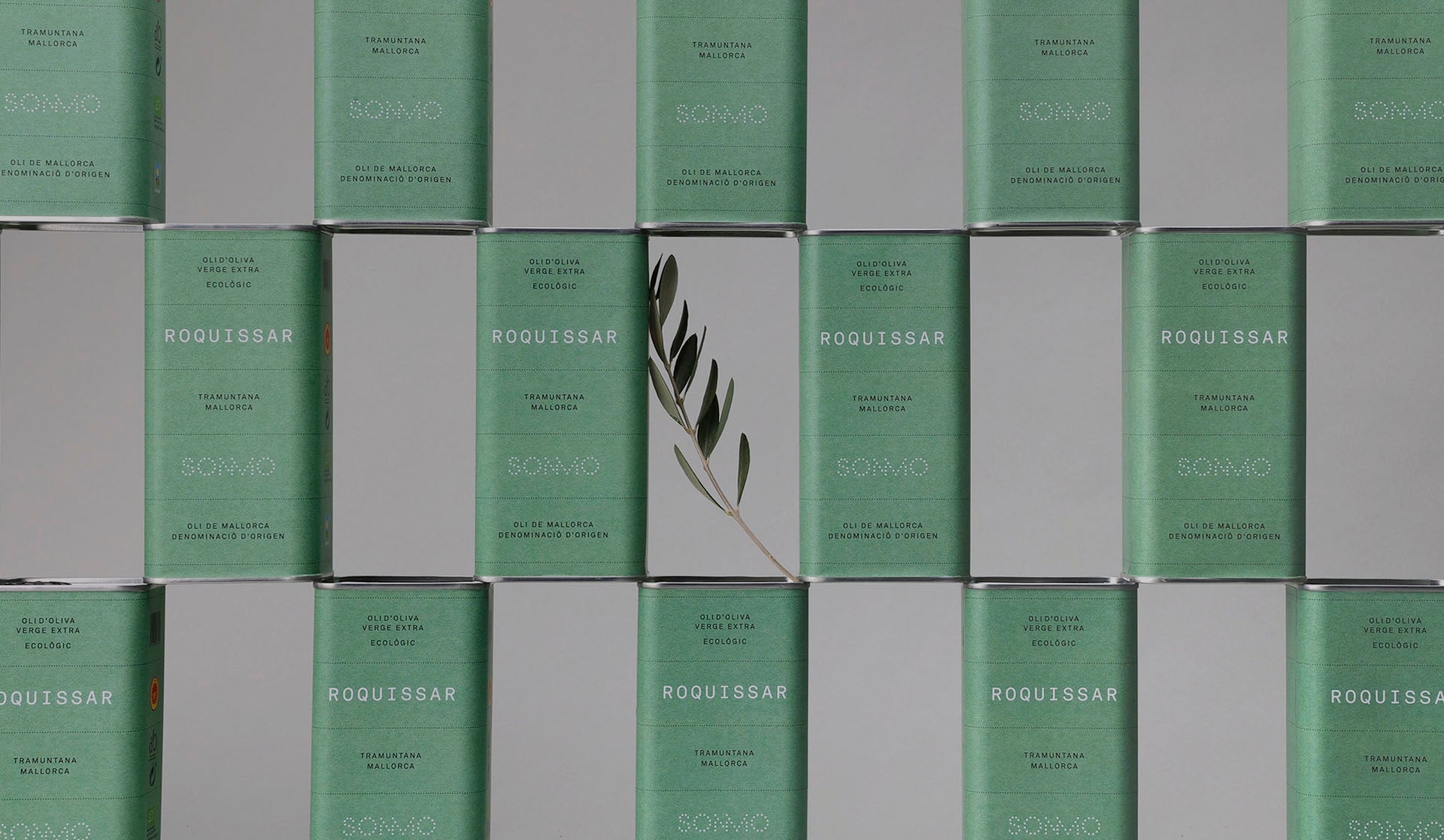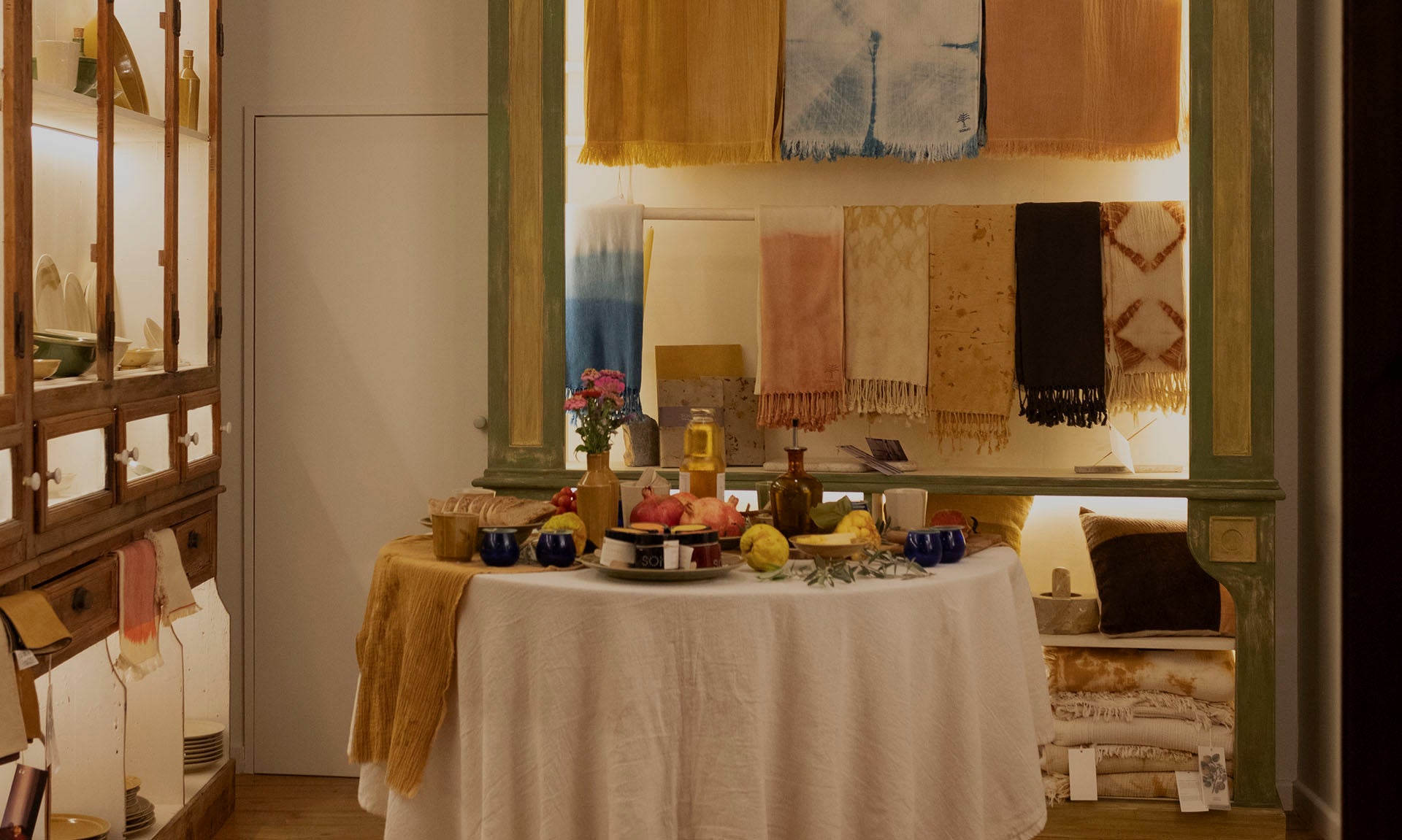
THE TABLE OLIVE HARVEST AT SON MORAGUES: HAND SELECTION AND MALLORCAN TRADITION
In the Serra de Tramuntana, the olive season begins with the harvest of green olives for jarring. This year, which hasn’t been particularly good in terms of olive yield, we have collected 800 kilos over the course of a month. Every year, in early October, when the first olives reach their optimal point of maturity, the first manual harvest begins. The largest and healthiest olives from the crop are selected and used for the production of traditional Mallorcan “senceres” (whole) and “trencades” (broken) preserved olives.

For centuries, Mallorca has produced table olives from the Mallorquina variety, the only protagonist of the “Denomination of Origin Olives of Mallorca” (DO). This variety is the most representative of the island and is almost exclusively found in the Serra de Tramuntana, a landscape marked by the dry-stone terraces of the Mallorcan mountains. The DO Olives of Mallorca was created to support this traditional crop and to highlight the ancient methods still used today.

The Mallorquina Variety: unique characteristics
The Mallorquina olive tree stands out from other varieties as it is cultivated exclusively using traditional dry farming methods, in irregular planting patterns, and on dry-stone terraces. Additionally, all productive olive trees are the result of a graft of this variety made centuries ago on a pre-existing wild olive tree. Its fruit is medium to large in size, with a soft yet complex flavor due to the unique conditions in which it grows. Its firm skin and juicy pulp make it ideal for fermentation in brine. This process follows a traditional Mallorcan recipe, and takes up to six months, allowing the olive to absorb the natural flavors of the brine, enhancing its taste profile and setting it apart from any other variety on the market.

Harvesting and production process
This early harvest at Son Moragues is entirely manual. The healthiest and largest olives are handpicked, ensuring only the best fruits proceed to the next stage: fermentation in jars following traditional recipes.

The olives are divided for two different preparations:
- Whole olives: they are fermented as harvested, maintaining their full shape and firmness.

- Broken olives: they are slightly broken before fermentation, and fennel and Mallorcan chili (prebe de cirereta or Capsicum frutescens) are added, allowing the brine to penetrate better and adding additional flavor notes to the olives.

Both types of olives are made using 100% natural ingredients, with no preservatives or chemicals, ensuring a healthy and sustainable product.
Designation of Origin “Olives of Mallorca”
The DO Olives of Mallorca not only protects the geographic origin but also the traditional recipes used in their production. The olives under this DO are the result of a fully artisanal process, from cultivation on terraces to harvesting and fermentation. Only products that meet strict quality and production criteria can carry this label.

Thanks to this certification, Mallorcan olives receive well-deserved recognition, and the traditional cultivation in the Serra de Tramuntana is distinguished from the newer plantations proliferating on the plains of the island or in other parts of the Balearics. The DO Olives of Mallorca plays a key role in preserving olive cultivation in the Serra de Tramuntana, a central element in this cultural landscape declared a UNESCO World Heritage Site.
For more information on DO Olives of Mallorca, visit their official website: Oliva de Mallorca. To taste the best Mallorcan olives with the highest quality standards, there’s nothing better than SONMO’s broken or whole olives, available at SONMO stores and online shop.

And to learn more about the processes behind SONMO's production and product creation, you can visit SONMO's YouTube channel for a peep behind-the-scenes. Also on Instagram.


